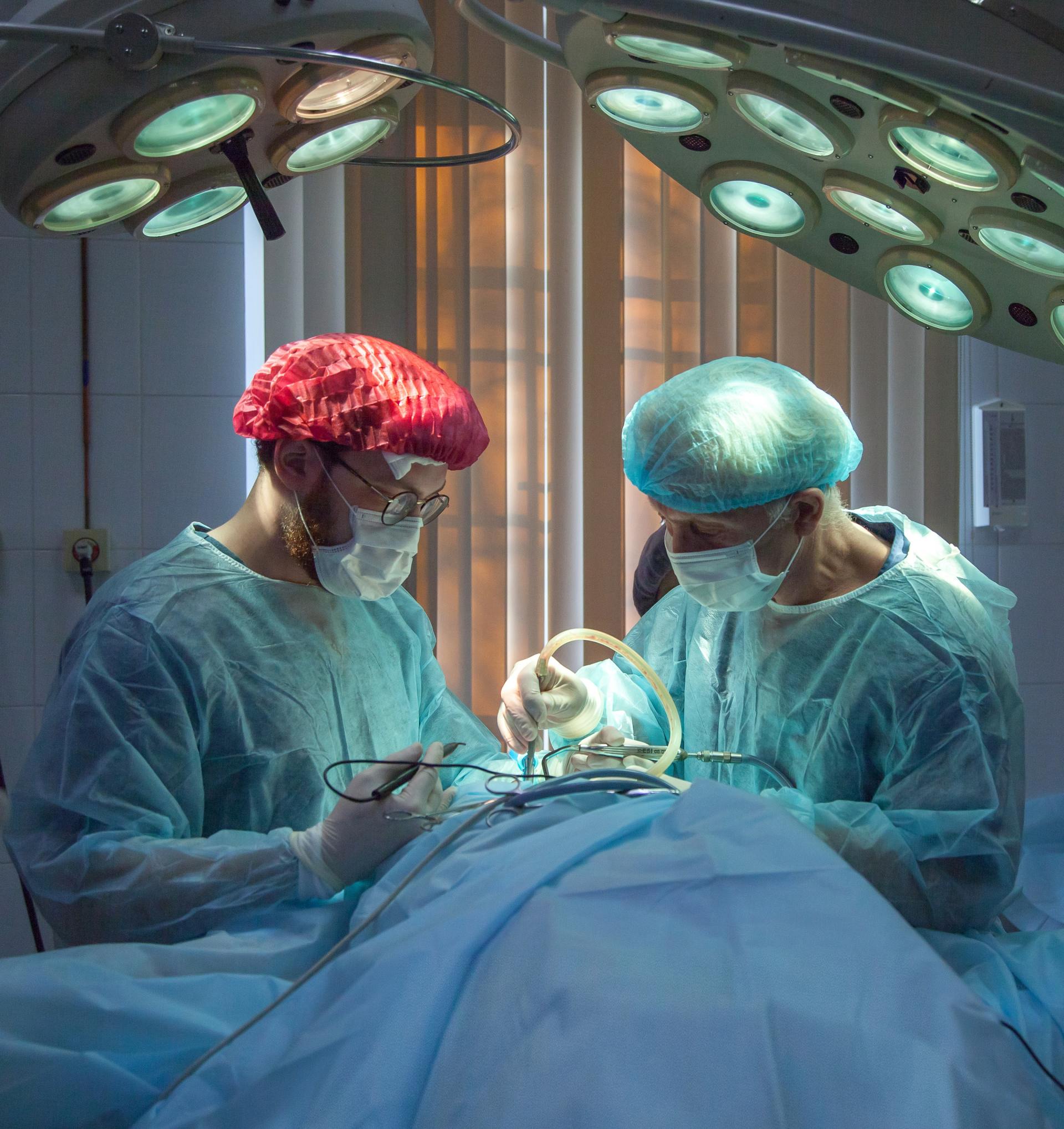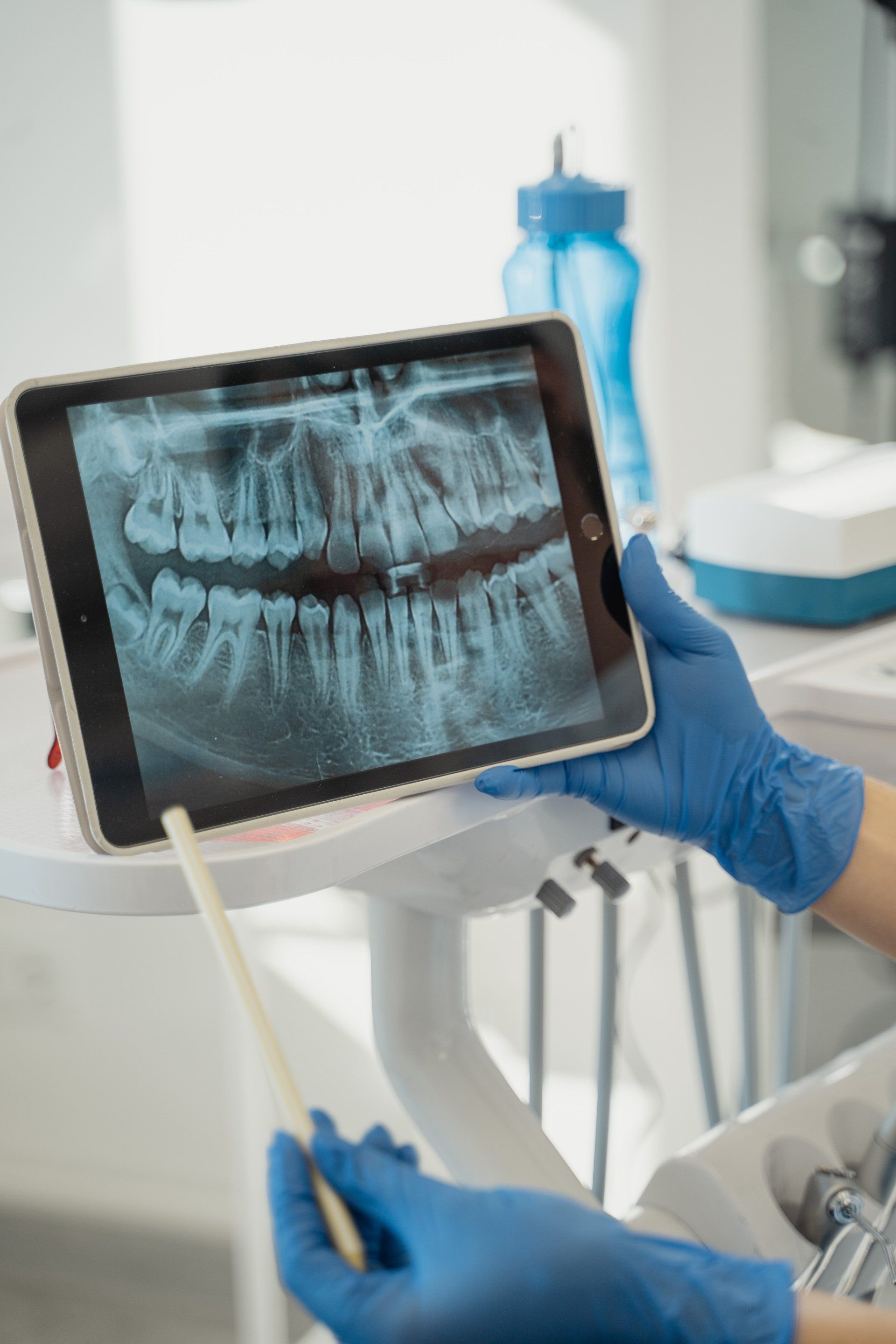Childhood obesity
Veronika Valdova • January 20, 2020
Childhood obesity
August 2017
Obesity in adults is defined as having a body mass index (BMI) of 30 or more, while overweight stands for BMI between 25 and 30 (Baker, 2017). BMI, adjusted for age and gender, is used to measure obesity in children, taking into account different growth patterns among boys and girls for each age group. The British 1990 growth reference (UK90) serves as the growth standard. The threshold is 85th percentile for overweight and 95th percentile for obese. The increase in BMI was observed in both genders (The Health and Social Care Information Centre, 2013). At present, nearly a third of UK children are either overweight or obese. Children with excess weight are more likely to become overweight adults and suffer from a range of related ailments such as type-2 diabetes, heart disease, and depression. Excess weight is linked to academic underachievement and economic deprivation, as well as increased costs on the public social and welfare systems (Department of Health, 2017).
Epidemiology
The current prevalence of adult obesity in England is 27%, and another 36% of people are overweight. The number of overweight people has been steadily growing over the past decade. Men suffer from higher obesity rates than women; however, the percentage of overweight people is equal for both genders. The worst affected regions include Northern England, Yorkshire and Midlands. The highest obesity rates are in the age group between 55 and 64 years of age. About 9% of children in England become obese by the age of 4-5. Of every hundred children aged 4 and 5 years, 77 are of normal weight, 13 are overweight, and nine are obese. By the age of 10-11, the number of children with healthy weight falls to 65, and the number s of overweight and obese children increases to 14 and 20, respectively. In the age group of 10-11-year-olds, the highest rate of obesity can be found in the most deprived regions in England, where the obesity rates reach 26% compared to 15% in the least deprived areas. In Scotland, 71% of children 12-15 years of age are of healthy weight, while 14% are overweight, and 15% are obese. Obesity drug prescriptions have fallen in all UK countries since 2008. With 26.6% of the population obese, the UK follows the USA (38.2%) and Australia (27.9%) but ahead of Germany (23.6%) and France (16.9%) (Baker, 2017).
The examination of trends shows a worrying development. In 2015, about one in five first-graders and one in three 10-year-olds were overweight or obese, and it is estimated that if the current trend continues, the number of children with excess weight will increase to 50% by 2020. The numbers of overweight and obese children are higher in urban areas and lower in rural areas where people, including children, tend to spend more time outdoors. Children born after 1980 are three times more likely to have excess weight by the age of 10 than generations born before them, partly because half of them do not meet the target of at least 60 minutes of physical activity a day (RCPCH, 2015).
Ethnic background also affects the risk of becoming overweight or obese. The highest prevalence of childhood obesity at school reception is among those who self-identify as Black or Black British (>30%). By school grade six (10-11 years of age), the prevalence of excess weight, overweight and obesity combined, reaches 30% and more for ethnic groups except for Chinese, Black British being the worst affected (>40%) (Hanson, 2015).
Obese and overweight children are more likely to live in low-income households, especially boys, while girls from the highest income backgrounds were least likely to be obese. Childhood obesity was found to be most prevalent in households where the parents were overweight or obese as well. There was also a positive correlation between a sedentary lifestyle and BMI for both boys and girls (The Health and Social Care Information Centre, 2013).
Health Impact
The health impact on child development starts in the womb. Although two-thirds of pregnancies in the UK are planned to some degree, only a small minority of women change their lifestyle prior to conception, including the efforts to lose weight. In 2013, over one-third of British women aged 16-24 years and 50% of women aged 25-34 years were overweight or obese. Multiple risk factors in early childhood increase the probability of being overweight or obese later in life 4-fold. The most relevant risk factors are maternal obesity and pre-pregnant BMI >30, excess gestational weight gain, smoking during pregnancy, low maternal vitamin D status, and short duration of breastfeeding (Hanson, 2015).
Obesity is a significant public health problem that is associated with cardiovascular disease. Hyperlipidemia, type 2 diabetes, and hypertension further increased the risk of developing cardiovascular complications, such as peripheral artery disease and coronary artery disease, and increases the risk of other conditions such as cancer, osteoarthritis, or gallbladder problems. The National Audit Office (NAO) estimated that the number of deaths attributable to obesity is about 6% of all deaths a year, or 30.000 deaths in total (The Health and Social Care Information Centre, 2013).
The costs of the treatment of obesity are steadily increasing. The total cost of obesity is about £27 billion per year, of which £19 billion accounts for NHS care, including obesity medications. Many weight loss approaches result in short-term weight loss that is often regained once the intervention stops. Multicomponent interventions recommended by NICE combine lifestyle guidance, improvement of diet quality, decrease in calorie intake, increase in activity levels. Weight Action Program (WAP) aimed at the loss of 5% bodyweight that was expected to have health benefits. It was encouraging that 41% of the participants achieved this goal (NIHR Centre, 2017).
Obesity increases the risk of numerous diseases later in life and all-cause mortality. The Health Survey for England (HSE 2011) analyzed the relationship between BMI, waist circumference, and the prevalence of specific diseases and the use of anti-obesity drugs. Sibutramine (Meridia, Reductil), an appetite suppressor, was withdrawn from the market because of a higher risk of stroke and heart attack. The market authorization for rimonabant (Acomplia) had to be suspended because of the serious psychiatric side effects of the drug (The Health and Social Care Information Centre, 2013).
Obesity in children is becoming a problem for pediatricians as well because of the lack of guidance from NICE on how to manage the condition and associated ailments. Expert advice by the Obesity Services for Children and Adolescents (OSCA) Network Group provides pediatricians with assessment guideline, guide how to identify underlying causes of obesity, how to recognize significant co-morbidities and assist with the choice of appropriate treatments. The guideline primarily deals with cases that require referral to specialized care. A referral shall be considered in children with BMI > 98th percentile and at least one risk factor. Risk factors include short stature or dysmorphic signs, hypertension, sleep apnea, abnormal glucose or insulin metabolism, issues with mobility or joint problems, dyslipidemia, signs of non-alcoholic liver disease, polycystic ovarian syndrome, psychiatric co-morbidities such as eating disorders, family history of type 2 diabetes and early-onset cardiovascular disease. The examination should include screening for glucose and lipid metabolism, liver function, endocrinopathies, genetic obesity syndromes and concomitant drug use, sleep problems, and behavioral and cognitive problems (OSCA (Obesity Services for Children and Adolescents) Network Group, n.d.).
Behavioral factors
Overweight and obesity have a significant impact on young peoples’ lives. The Association for Young People’s Health worked with a group of 12-19-year olds who have been involved in the PROMISE study for the treatment of obesity that was funded by NIHR and carried out by UCL and partners and surveyed people from across the UK. Young people’s views on weight loss vary between age groups. Teenagers love online engagement and mobile apps and appreciate incentives such as gym passes. The barriers perceived by young people include denial, fear of bullying, stigma, and shame. For parents, the main issue is the timing of discussions that is crucial for young people to engage in any communication at all. Self-assessment tools, incentives vouchers, gym membership, and access to information are perceived as essential by parents of overweight children. For many parents, the obesity of their children represents a significant stigma. Health professionals may also require some additional training that would help them understand the impact of stress and bullying on weight gain and facilitate effective communication with young people. Nutrition education is perceived as one of the most critical gaps. Flawed self-assessment is an essential part of any solution: most overweight children viewed their weight as normal. Yet, most believed they are supposed to find out that they are overweight by themselves. The majority of young people would expect others to inform them that they are overweight, should it be their family, teachers, health professionals, or youth workers. For many, the problem of weight is ignored long enough to become unmanageable (Rigby & Perrow, 2015).
School-age children who become obese before ten years of age tend to carry the extra weight for the rest of their lives. Embarrassing holiday experiences with overweight children are often the first impulse than forces parents to join healthy eating and activity programs. For children, the concern is the food choices their families make, eating out and takeaways, and treats and sweets often used as a reward for good behavior. The location of fast-food restaurants within reach of children is a significant risk factor some communities have to tackle (ITV Tonight, 2015).
Obesity is a complex condition caused by a combination of biological, environmental, behavioral, and commercial factors. In obesogenic environments, it is much more challenging to make healthy choices that are either less convenient or more costly. Healthcare professionals need to educate their patients about the impact of obesity and make every contact count. Other actions to be taken by healthcare professionals include the provision of weight management services that should be given the same priority as smoking cessation programs, and implementation of nutritional standards comparable to those used in schools shall soon apply in all UK hospitals. Support for new parents should include elementary food preparation skills to promote breastfeeding. The obesogenic environment can be improved by the implementation of nutritional standards in schools, reducing the presence and accessibility of fast food outlets in the proximity of schools, and a ban on advertising of fatty and sugary foods before 9 pm. It is equally important to make the healthy choice the natural choice by taxing sugary drinks, labeling food, and building an environment that facilitates active travel (Academy of Royal Medical Colleges, 2013). The higher prevalence of obesity among disadvantaged groups is well known; however, the early life factors that attenuate the effect are unclear. A study on more than 11.700 children explored risk factors for childhood obesity thoroughly. Children of mothers with academic qualifications were better off than those whose mothers did not have any academic degrees, despite the same socio-economic status. The highest impact risk factors were maternal pre-pregnancy weight, smoking during pregnancy, and low maternal qualifications (Massion et al., 2016).
Nutrition
Eating behavior and food choices have a profound impact on the development of overweight and obesity in children. Most importantly, the size of the average portion increased substantially. While in the 1960s, the diameter of an average dinner plate was 9 inches, half a century later its size increased to 12 inches. Making portion sizes smaller would reduce the total calorie intake in the UK by 8% in children and by 16% in adults (Marteau, 2015).
Potter et al. (2017) argue that children’s future BMI can be predicted from the portions their parents consider normal. The researchers studied parental and children’s beliefs about the ideal and maximum portion size appropriate for their children. While children’s own beliefs about how much food is appropriate did not predict their future BMI, their parents’ beliefs did. Both children and adults tend to consume more food if given the opportunity to do so. Portion size is an ideal opportunity to decrease the total consumption of food. Children who self-select a larger portion size tend to be overweight. However, not all studies found this relationship. Higher tolerance for large portions may lead to the selection of large portions due to gastric capacity that is higher in obese individuals. Child-parent pairs were presented with a series of 50 images of seven main meals they were familiar with. The pictures varied by portion size, varying by 20 kcal increments. Children were asked to select their ideal and maximum portion size and how much they like the meal. Parents were asked to indicate their own ideal portion size, their child’s ideal and maximum portion size, own maximum portion size and familiarity with the food. Parents, who overestimated their child’s ideal and maximum portion size, were more likely to have an overweight or obese child (Potter et al., 2017).
School meals account for a significant portion of children’s diet and contribute to forming healthy dietary behavior. Lucas et al. (2017) compared school meal policies in the UK, Australia, and Sweden. In the UK, the system of regulation of school meals is varied and decentralized, and the policies are inconsistently applied. In the UK, foods provided in schools are categorized as starchy, dairy, fruits, vegetables, and non-dairy protein, while in Australia, the federal guidelines employ a traffic light approach. The researchers focused on existing standards and their practical implementation and impact on children’s health. The chronological age of children in preschool and primary school, therefore, may vary depending on standards that apply to them. In the UK, children in nurseries receive 1/3 pint (189 ml) of milk a day, and fruit and vegetables three times a week under the Nursery Milk Scheme and the Free School Fruit and Vegetable Scheme. Some standards only apply in Wales and Northern Ireland but are voluntary in England. Guidelines inconsistently apply to packed lunches, although some schools impose restrictions on sweet drinks, sweets, and savory snacks. Because of the part-time attendance of primary schools, it is impossible to know how many preschool children eat lunches that conform to the mandatory preschool standards. The widespread use of packed lunches and additional food sources such as vending machines, bake sales, and tuck shops make it impossible to measure the health benefits of the implementation of school meal standards. The health impact of the provision of nutritionally sound meals to disadvantaged groups is difficult to assess due to complex policies. Moreover, these policies are inconsistently applied and enforced across the country (Lucas, Patterson, Sacks, Billich & Evans, 2017).
Physical activity
The levels of physical activity of adolescents aged 13-15 years fell between 2008 and 2012. In 2008, only 28% of boys and 14% of girls met the recommended daily target of physical activity. By 2012, these numbers fell to 14% for boys and 8% for girls (Hanson, 2015).
According to the Health Survey for England (HSE), the overall activity of children aged 4 to 15 has been steadily declining. The survey used self-reported activity and accelerometer data. Other studies that measured school PE and Sports programs were included in the assessment. Young people and children should spend 60 minutes every day performing moderate or vigorous physical activity, as recommended by the Chief Medical Officer (CMO) of England. The children were categorized into subgroups meet recommendations, some activity, and low activity by their level of activity. In 2008, one-third of boys and one-quarter of girls reported they engage in the recommended activity levels every day. The proportion of girls meeting the physical activity recommendations decreased from 35% at the age of 2 to 12% among 14-year-olds.
Accelerometer data confirmed the self-reported data for boys (33%) but corrected the number of girls who exercised at the recommended level from 21%. The results significantly varied by age: of boys aged 4 to 10, 51% exercised at the recommended level, while only 7% of boys from 11 to 15 met the standard; only 34% of girls aged 4 to 10 met the recommended physical activity standards. However, in the age group from 11 to 15, none of the girls included in the study met the recommended target of 60 minutes a day. Achieving physical activity targets has been a challenge for most children. One way how to achieve this goal is to travel to and from school on foot or by bicycle. In 2011, 43% of children walked to school, and 32% got a ride in their parents' car and only 2.4% rode a bike. The main activities children engaged in were walking, formal sports, and informal activities (The Health and Social Care Information Centre, 2013).
The level of activity also varies with ethnic background. According to a study published by Smith, Aggio, and Hamer (2017), children of South Asian descent are less active than their Caucasian counterparts are, even though all were British born. The researchers investigated the change in activity levels of children based in central London concerning ethnicity using the Actigraph accelerometer. The data from 281 children (64% Caucasian or mixed, 18% Black and 18% South Asian) showed that the life of children of South Asian descent was significantly more sedentary at a 1-year follow-up than the lives of children of Caucasian or mixed descent. Approximately 10% of children in the studied sample were obese. The authors observe that children from minority ethnic groups are at higher risk of type 2 diabetes, central adiposity, and hyperlipidemia compared to Caucasians and children of mixed heritage. There is increasing evidence that British-born children of South Asian descent display signs of insulin resistance already at the age of 10. Besides, there is growing concern that a sedentary lifestyle contributes to the diabetes epidemic along with low levels of physical activity. Compared to 73% of Caucasian 10-year-olds, only 35% of children of South Asian descent meet the recommended 60 minutes of moderate and vigorous activity (MVPA) a day. The Camden Active Spaces study examined children’s physical activity before and after the renovation of a local playground. The children were asked to wear the accelerometer around their waist when walking around and only take it off during sleep or water-based activities such as swimming. Sedentary time was defined as 100 cpm, light exercise 100 – 3000 cpm, and MVPA as >3000 cmp. The measurements were compared to self-reported activity time at school, watching TV, playing video games, or studying. The combination of sedentary behavior and low level of activity promotes visceral adiposity that is the highest risk factor for the development of type 2 diabetes. Children of South Asian descent that display these behaviors early in life are particularly at risk (Smith, Aggio & Hamer, 2017).
Environment
The environment is an essential part of the lifestyle. Two approaches to changing behavior toward making healthier choices include resisting unhealthy environments where calorie-dense food is plentiful and opportunities for exercise scarce, and the modification of environment around us that make us eat healthier foods and move more. Subtle changes, such as a standing desk can have a profound cumulative impact (Marteau, 2015).
Osei-Assibey et al. (2012) reviewed studies relating to the obesogenic environment and its impact on childhood obesity. One of the causes of obesity is the fact that it is difficult to pursue an individual healthy lifestyle in an environment that promotes diet rich in saturated fats and sugar and a sedentary lifestyle. The obesogenic environment is the sum of the influences that the surroundings, opportunities or conditions of life have on promoting obesity in individuals and populations. Parental beliefs and behaviors become the prime target for intervention due to associations between parental influences and children obesity. Early age interventions are researchers because established obesity becomes more challenging to tackle, and tends to continue to adolescence and adulthood. The main dietary drivers of obesity are the demand for palatable, high-energy foods, ease of preparation, large portions, sugary drinks and availability, and access, especially in schools and when eating out. The authors reviewed interventional studies that focused on the exposure of children below the age of nine to dietary, environmental influences, and the BMI outcome of such intervention. The included studies were from the USA (23), the Netherlands (4), UK (4), Germany (3), and Sweden (1).
The Avon Longitudinal Study of Parents and Children in the UK showed that junk food dietary pattern established at 38 months of age leads to overweight and obesity at age 7. The effect of foods that are easy to prepare can be observed on working mothers, and especially those of higher socioeconomic status who often work long hours. Five studies explored the impact of food promotion on food choices and immediate energy intake related to exposure to food adverts. Five studies explored the effect of portion sizes on food consumption and found a positive correlation. Increasing portion size by adding vegetables was an effective way of reducing the total energy intake. Restrictive feeding did not reduce total energy intake. Unsurprisingly, high-energy snack foods were linked to obesity, especially when consumed frequently in front of a TV. Four studies examined the effect of sugary soft drinks. Placing water fountains in schools was an effective way to cut back sugar intake. Interventions in schools that aimed at the reduction of the fat content of school lunches led to a decrease in serum cholesterol but not obesity. Promotion of low-fat products, fruit and vegetables had short-term effects at best; complete elimination of alternatives was required to achieve the desired outcome. The main limitation of the reviewed studies was short duration, only between 4 weeks and six months. Besides, the data derived from the study population may not be generalizable to the target groups (Osei-Assibey et al., 2012).
The slow change in public perception of obesity as a problem corresponds with the shift in reporting. A review of 2,414 articles published between 1996 and 2010 in 7 UK newspapers showed increasing coverage of the topic of obesity and a trend toward a change in the obesogenic environment with less focus on individual behavioral modifications. Most of the coverage was based on information from the World Health Organisation that issued a global health warning that obesity's impact is so diverse and extreme that it should now be regarded as one of the greatest neglected public health problems of our time. UK prevalence of obesity is the highest among the countries of Northern Europe and continues to increase among all age groups. Commercial interests received widespread coverage as well (Hilton, Patterson & Teyhan, 2012).
Policies and Recommendations
Incentives that encourage people to change their behavior range from educational programs to tax imposed on unhealthy foods such as fizzy drinks. Experience from Denmark shows that taxing foods that contain more than 2.3% of saturated fat decreased the sales by 0.9%; however, the change was only marginal in the most at-risk population. In Mexico, a 10% tax on sugary drinks reduced sales by 10%. Other measures aimed at the decrease of consumption of sugary beverages include the reduction of package size or regulation of the packaging shape, location in the store elsewhere out of direct sight, and consumer education. The reduction of package size and taxation has the highest impact and lowest acceptability by the public (Marteau, 2015).
In 2015, a report by the Royal College of Pediatrics and Child Health recommended a series of measures aimed at the reduction of the prevalence of childhood obesity. The measures included a pilot duty of at least 20% on sugary soft drinks, the expansion of food standards to all schools, making personal, social and health education a statutory subject, and the ban on advertising of fatty and sugary foods before 9 pm (RCPCH, 2015).
In August 2016, the UK government published its report Childhood Obesity: A Plan for Action. The timing coincided with the Olympics, and the report received very little media attention. The report fails to address stronger controls on advertising, reformulation of foods available in schools, and nutrition education. The report recognizes that the causes of childhood obesity are a complex combination of biological, behavioral, environmental, and commercial factors. The problem of childhood obesity is especially prevalent in lower socioeconomic groups, where the level of control people have over their environment is the lowest. Mark Hanson et al. (2017) concluded that the cooperation of the UK government with international experts on the topic would help develop more effective policies and standards (Hanson, Mullins & Modi, 2017).
In January 2017, the UK Department of Health, the Cabinet Office published guidance on Childhood obesity: A plan for action. The policy outlines the most important factors that contribute to the epidemic of childhood obesity, such as the introduction of a soft drinks industry levy, a 20% sugar decrease in foodstuffs, making healthy options available in the public sector, and improving conditions at schools to encourage physical activity. A substantial portion of calorie intake consumed by British teenagers comes from sugary drinks, increasing their risk of obesity, tooth decay, and type 2 diabetes. A single can of a sweet drink contains more than a recommended daily intake of sugar. Soft drinks industry levy will be used to support physical activity in schools. The change will be legislated in the Finance Bill 2017. More transparent food labeling and reduction of sugar content per 100g of product, portion size, and total calorie content will affect breakfast cereals, yogurts, biscuits, cakes, confectionery, pastries, puddings, ice cream, and sweet spreads. More food categories will be added in 2017.
Competition Innovate UK was run to support research into new, healthier, processes and products. Update in the nutrient profile will be used to assign a score to individual products that will be subject to advertising restrictions. Physical activity is an integral part of healthy development. At least 60 minutes of moderate to vigorous physical exercise every day are recommended for the healthy development of children. Physical education offered in schools should be complemented by active breaks, active lessons, sports, and other events outside schools and at home. The Sports England Strategy Towards an Active Nation (2016) should contribute to these efforts by providing opportunities for families to be active together. The government also supports projects of walking and cycling to school. A new rating scheme should help schools to increase physical activity of children (Department of Health, 2017).
References
Academy of Royal Medical Colleges. (2013). Measuring Up: The Medical Profession’s Prescription for the Nation’s Obesity Crisis. Retrieved from http://www.rcpch.ac.uk/sites/default/files/page/MU_REPORT.pdf
Baker, C. (2017). Obesity Statistics. House of Commons. Retrieved from http://researchbriefings.files.parliament.uk/documents/SN03336/SN03336.pdf
Department of Health. (2017). Childhood obesity: a plan for action - GOV.UK. Gov.uk. Retrieved 7 August 2017, from https://www.gov.uk/government/publications/childhood-obesity-a-plan-for-action/childhood-obesity-a-plan-for-action
ITV Tonight. (2015). XXL Britain. https://www.youtube.com/watch?v=C8P0HJo-_fg: ITV Tonight.
Hanson, M., Mullins, E., & Modi, N. (2017). Time for the UK to commit to tackling child obesity. BMJ, j762. http://dx.doi.org/10.1136/bmj.j762
Hanson, M. (2015). Early life origins of obesity. Presentation, RCPCH Child Obesity Summit.
Lucas, P., Patterson, E., Sacks, G., Billich, N., & Evans, C. (2017). Preschool and School Meal Policies: An Overview of What We Know about Regulation, Implementation, and Impact on Diet in the UK, Sweden, and Australia. Nutrients, 9(7), 736. http://dx.doi.org/10.3390/nu9070736
Marteau, T. (2015). Interventions to change behaviour: How much can the public bear?. Presentation, Royal College of Paediatrics and Child Health.
Massion, S., Wickham, S., Pearce, A., Barr, B., Law, C., & Taylor-Robinson, D. (2016). Exploring the impact of early life factors on inequalities in risk of overweight in UK children: findings from the UK Millennium Cohort Study. Archives Of Disease In Childhood, 101(8), 724-730. http://dx.doi.org/10.1136/archdischild-2015-309465
NIHR Centre. (2017). A group weight loss programme shows promise compared with usual approach. Discover.dc.nihr.ac.uk. Retrieved 7 August 2017, from https://discover.dc.nihr.ac.uk/portal/article/4000627/a-group-weight-loss-programme-shows-promise-compared-with-usual-approach
OSCA (Obesity Services for Children and Adolescents) Network Group. (n.d.). OSCA consensus statement on the assessment of obese children & adolescents for paediatricians. Retrieved from https://www.cornwallhealthyweight.org.uk/OSCA_Guidelines.pdf
Osei-Assibey, G., Dick, S., Macdiarmid, J., Semple, S., Reilly, J., & Ellaway, A. et al. (2012). The influence of the food environment on overweight and obesity in young children: a systematic review. BMJ Open, 2(6), e001538. http://dx.doi.org/10.1136/bmjopen-2012-001538
Potter, C., Ferriday, D., Griggs, R., Hamilton-Shield, J., Rogers, P., & Brunstrom, J. (2017). Parental beliefs about portion size, not children's own beliefs, predict child BMI. Pediatric Obesity. http://dx.doi.org/10.1111/ijpo.12218
RCPCH. (2015). Tackling England’s childhood obesity crisis. RCPCH. Retrieved from http://www.rcpch.ac.uk/system/files/protected/news/Obesity%20Summit%20report%20FINAL.pdf
Rigby, E., & Perrow, F. (2015). RCPCH Child Obesity Summit. Presentation, RCPCH Child Obesity Summit.
Smith, L., Aggio, D., & Hamer, M. (2017). Longitudinal patterns in objective physical activity and sedentary time in a multi-ethnic sample of children from the UK. Pediatric Obesity. http://dx.doi.org/10.1111/ijpo.12222
The Health and Social Care Information Centre. (2013). Statistics on Obesity, Physical Activity and Diet: England, 2013. NHS. Retrieved from https://catalogue.ic.nhs.uk/publications/public-health/obesity/obes-phys-acti-diet-eng-2013/obes-phys-acti-diet-eng-2013-rep.pdf

Nařízení (EU) 2017/745 o zdravotnických prostředcích vstoupilo v platnost 26. května 2021. Platnost certifikátů vydaných podle stávajících směrnic vyprší nejpozději 24. května. Toto je třeba provést ve lhůtě, která odpovídá době nezbytné pro přezkoumání dokumentace a před vypršením platnosti současných certifikací. Česká republika stále nemá svůj oznámený subjekt. Jakmile dojde k akreditaci, bude ITC zavalen ohromným počtem nevyřízených podání v českém jazyce. Zajisdtěte si pomoc s podáním od týmu Arete-Zoe, který má s přípravou klinické dokumentace dle MDR bohaté zkušenosti.

The reduction of Czech-based Notified Bodies (NBs) leaves only one still pending accreditation and one in Slovakia that does accept submissions in Czech. The delay in accreditation has produced a significant backlog for submissions pending review and acceptance. The complexity of MDR is more stringent both for the preparers and the reviewers at the NB. This situation introduces many vulnerabilities into the submission process and represents substantial risk that can and should be minimized! The potential consequences of certification delays may be critical for some manufacturers. Is the cost penalty from delay because of necessary revision or rejection worth the minor economy of an in-house effort? Get your staff an assessment from a team with proven MDR success! Contact Arete-Zoe for a courtesy review of your situation and secure assistance that will reduce your risk! Stay agile, competitive, and profitable! What is the current situation? Regulation (EU) 2017/745 on medical devices (the Medical Device Regulation, MDR), which was adopted in April 2017, became applicable in the European Union on 26 May 2021, after a year delay due to Covid [i] . The certificates issued under the existing Directives for medical devices ( 93/42/EEC and 90/385/EEC ) will expire on or before May 24th, 2024. By then, all manufacturers who wish to keep their products on the market as medical devices, will have to upgrade their documents to the new standards. Previous documentation standards fall far short to the new requirements, placing significant burden on both the manufacturers and reviewers at the NB. Many previous submissions under MDR have been rejected based on documentation shortfalls within any of the many sections. When considered with the significant backlog, any aspect of documentation that requires revision only compounds certification delay and may jeopardize market access for many medical devices. All this needs to be done within a period that accounts for the time necessary for review prior to expiration of current certifications. Additionally, there is a significant bottleneck in submission processing due to the limited capacity of NBs in the EU due to a reduction in the number of designated NBs, increased number of products that are subject to review by NB due to reclassification, and increased complexity of MDR submissions compared to MDD/AIMD. The Czech Republic still does not have its own designated NB. Once accreditation occurs, the backlog of Czech language submissions will be overwhelming. The high number of returns and requests for amendments and revisions shall be expected in the initial months, slowing the process further for all. By May 2024, many manufacturers will find themselves in a situation when their products will no longer be marketable in the EU due to expired certificates and face additional consequences from having products purged from supply chain. Discussion MDR is here to stay. Czech Minister of Health MUDr. Vlastimil Válek in his introductory statement at the October 2022 AVDZP Conference [ii] stated that another postponement of MDR is out of question. While it is not in the interest of the European Union to be dominated by non-EU manufacturers, primarily from Asia, it is unlikely that the existing Regulation will be substantially changed to accommodate manufacturers’ concerns. Válek also reminded the public that the Wild East mentality with improvised devices throughout the hospital system that dominated the Czech market in the 1990s is gone and will not return. In short, MDR is a reality to which manufacturers will have to adjust. Notified bodies available to Czech manufacturers under MDR The number of EU NBs that are designated under MDR has increased to 34, half of which are located in Italy (9) and Germany (8). The remaining 17 are in Belgium (1), Croatia (1), Finland (2), France (1), Hungary (1), Ireland (1), the Netherlands (3), Norway (1), Poland (2), Slovakia (1), Slovenia (1), Spain (1) and Sweden (1) [iii] . European manufacturers can pursue certification of their products with any EU NB, with limitations to the type of product and the capacity and willingness of NBs to take on new clients. However, for access to the greatest number of NBs, the submission should be in English. Two Czech NBs were designated in Czechia under the 93/42/EEC (MDD): Institut pro testování a certifikaci, a.s. (ITC) and Elektrotechnický Zkušební Ústav, s.p. (EZÚ). Only one of them, ITC, is in the process for designation under MDR. However, the final scope of MDR codes ITC will be able to process has not been released. One additional institution, Czech Metrological Institute (CMI) is pursuing designation under MDR without prior history in medical devices under MDD or AIMD. The anticipated accreditation will take an additional year. Institut pro testování a certifikaci, a.s. (ITC), Czech Republic ITC’s current designations include Regulation (EU) 2016/425 Personal protective equipment, 2014/68/EU Pressure equipment, 2009/48/EC Safety of toys, Regulation (EU) No 305/2011 - Construction products and 2014/30/EU Electromagnetic compatibility. Designations under 93/42/EEC Medical devices and 98/79/EC In vitro diagnostic medical devices expired in May 2021 (MDD) and May 2022 (IVDD) [iv] . ITC will continue to perform audits under MDD during the transitional period until May 24, 2024. ITC submitted their application for designation under MDR on December 30, 2019. The Designating authority (ÚNMZ) verified completeness of the application and forwarded it to the European Commission in November 2020. The Commission designated the Joint Assessment Team in December 2020, which completed the evaluated in March 2021. On-site Joint Assessment was completed in June 2021. The official JAT report was issued in September 2021. ITC implemented CAPAs in fall 2021. In June 2022, designating authority ÚNMZ completed their review of CAPAs implemented by ITC and submitted it to the Joint Assessment Team for approval. In August 2022, ÚNMZ issued the final report. In September 2022, JAT issued its final assessment and a in October 23022, ITC underwent MDCG review and is now awaiting MDCG opinion that the notification can be accepted. The expectation is that ITC should be listed in the NANDO database by January 2023 for MDR [v] . According to Mgr. Jiří Heš, ITC will primarily serve Czech manufacturers who already are their clients and have certificates issued by them under MDD. New certificates under MDR won’t be issued in time and there will inevitably be a gap in coverage of products with valid MDD certification. [vi] ITC only began preparing application for designation under IVDR. Due to the extensive backlog of MDR certificates, it is reasonable to expect that the process of designation under IVDR will not be any faster. ITC currently does not offer any training on MDR for manufacturers or guidance on how to prepare submissions. The most significant thing any manufacturer can do for themselves is to ensure their submission is as appropriate as possible the first time. But they are left to their own means to sort out the transition from MDD to MDR. Without specific guidance from ITC on their expectations, there is significant risk from the ambiguity of the MDR Regulation itself. However, this risk can be reduced from experience from submissions under MDR to other NBs which will provide reasonable opportunity for a successful submission. Elektrotechnický Zkušební Ústav, s.p. (EZÚ), Czech Republic EZÚ’s current designations include Regulation (EU) No 305/2011 - Construction products and 2014/30/EU Electromagnetic compatibility. EZÚ won’t pursue designation under MDR. The activities EZÚ will continue include audit under MDD during the transitional period for 42 manufacturers whose certificates they serve, certification of quality management systems, and electrical safety. EZÚ also provides training on MDR for manufacturers and distributors [vii] . Czech Metrological Institute (CMI), Czech Republic CMI submitted their initial application in December 2020, a year later than ITC. The Joint Assessment Team evaluation (Article 39, paragraph 4 MDR) was completed in December 2021. In May 2022, CMI submitted their proposed CAPA plan. CMI strives to maintain the scope of devices included in their application (23 out of 44 basic codes and 18 out of 27 horizontal codes). The key requirement is to prove personnel availability for each code. CMI primarily intends to serve Czech manufacturers in Czech language, as only about a third of their reviewers have sufficient proficiency in English. CMI does not provide any training or guidance for manufacturers how to prepare documentation to pass their scrutiny. Certification of products on the Czech market There are over 400 Czech manufacturers listed in the database RZPRO holding nearly 6000 certificates that are currently valid. Of these, 4323 did not previously require the involvement of a NB (Class I). However, due to reclassification, some of these will require involvement of the NB under MDR, further stressing the throughput of the NB. Of the 1634 remaining certificates, 514 were issued by EZÚ and 391 by ITC. Another 133 MDD certificates were issued by other NBs that do not currently have MDR designation. The database also holds 2305 products other than Class I that do not have a NB listed. In total, ITC issued 541 certificates that are currently valid, including manufacturers from other countries. The database currently holds 630 valid certificates issued by EZÚ. All products certified by EZÚ will have to be recertified by another NB [viii] . The list of MDR codes that will be covered by ITC (or CMI, once designated) is not currently available. Mgr. Irena Storova (Czech State Institute for Drug Control) emphasized the quality of the MDR documentation as an essential condition required to avert a crisis. The current speed of issuing certificates by EU NBs is about 1.000 certificates a year. However, the anticipated need for medical devices in Europe is about 23.000 certificates issued by NBs over the period of 20 months, making the transition to MDR extremely challenging. The key problems are insufficient capacity of NB, partly due to accumulated backlog, partly due to increased complexity of MDR compared to MDD/AIMD, as well as inadequate preparedness of manufacturers to meet the new complex requirements of MDR [ix] . Experience of other EU NB shows exponential growth of applications and a serious lag in processing certificates. In February 2021, NBs received 1840 applications and processed 224 certificates. By October 2022, the number of applications grew to 8120, while the number of issued certificates was 1990 [x] . These numbers suggest further accumulation of backlog of unprocessed applications rather than catching up with the growing demand. The time to reach a Certificate according to MDR (MDR Quality Management System and Product certification) typically ranges from 13 to 18 months [xi] . This is consistent with ITC’s estimate that the review of a complete submission will take a year to issue a certificate. This means that all manufacturers who need their certificates renewed before the May 2024 deadline when they all expire will have to submit their applications before May 2023. Since ITC will only start accepting applications after the official MDR designation, it is safe to assume that all applications will be submitted in the period between the designation date and May 2023, creating a long backlog queue. To complicate the situation even further, manufacturers, whose MDR codes won’t be on ITC’s list, will have to look for a different NB to pursue their certificates. Czechia as a low price-point market The low-price level of devices on the Czech market complicates the transition to MDR even further. The system of defining reimbursements for medical devices is very rigid, and there are multiple pressures that keep prices down. These price controls conflict with increased costs associated with certification and recertification of products when considered with increased costs of energy, raw materials, transport, and labor. MUDr. Vlastimil Válek at the AVDZP Conference on October 13, 2022, stated that it is not in the interest of the European Union to allow non-EU manufacturers to dominate the EU market, and that there is an intrinsic value in self-sufficiency in times of crisis [xii] . The results from Survey on certifications and applications performed by MDCG & Stakeholders among NBs (51 NBs asked, 47 replies received) suggest that 60% of medical device clients are non-EU (10,913), compared to 7,143 EU clients [xiii] . Priority treatment for small business is not likely since SMEs are the majority of NB clients, both EU-wide and locally in the Czech Republic. In fact, as the threat for shortage of medical equipment becomes more urgent, policymakers might solve the crisis by prioritizing producers with high capacity, capable of meeting the demands of their respective health systems, as we have seen with the imports of medical equipment and protective materials during the Covid crisis. What is the risk to business due to delays in certification? The ability of NBs to process applications in a timely manner is an essential condition for the function of the medical device sector. This is directly influenced by the quality of manufacturers’ submission for certification. Manufacturers cannot legally keep their products on the EU market without valid certification. And, additional expenses will be incurred, if products have to be recovered from distribution chains due to delays in certification. Furthermore, this will create gaps in coverage, creating a void that can be filled by competitors. Extended periods of absence can stall otherwise good products and limit marketability once certification is finally obtained. Failure to obtain MDR certification for any portion of a product portfolio is an existential threat to any enterprise, potentially forcing reduction of staff, downsizing, making the enterprise vulnerable to competitors, or simply losing viability and going out of business. The absence of a feedback loop regarding the minutia of submissions’ content and format will cause additional delays and adjustments by the industry. ITC does not provide any MDR training and did not issue any guidance documents to facilitate successful submissions and reduce ambiguity relating to the novelty of the process. The first MDR certificate was issued in September 2019 by BSI [xiv] . This means that the cumulative experience in the industry among competition is significantly higher, placing Czech manufacturers 4 years behind other EU players. At present, Czech manufacturers have to rely on training provided by other NBs, industry consultants who rely on the same, in addition to feedback from their clients, and their own understanding of the Regulation and associated MDCG guidelines. Although CzechInvest does have a plan to start a comprehensive training program for manufacturers to facilitate the transition to MDR, the course has not started yet. The first students are expected to graduate in June 2024 [xv] . Learning curve by both newly designated NBs as well as manufacturers will inevitably affect the speed of processing, forcing reworks and amendments that would otherwise be avoidable. Securing consultancy with demonstrated MDR competency will remove substantial risk from the current situation. Recommendations What is the risk, and how does Arete-Zoe help your enterprise to mitigate such risk? The key to a successful MDR certification is a high quality, timely submission that complies with or better, exceeds minimum MDR requirements, ensuring timely processing and avoiding returns, requests for more information and outright rejections. It is important to note that the review and approval process depends on the understanding and application of MDR requirements by individual reviewers. Therefore, exceeding minimum requirements becomes a necessity for confident approval. The impact of additional information requests, although minor in terms of extra work, can be significant due to delays. Additionally, other manufacturers’ failed submissions in a long backlog of applications will continue to burden the system. The quality of the initial submission is essential to avoiding consequences in the transition to MDR and may be the single factor that keeps the business open. Manufacturers who have a fully trained in-house team already should still expect challenges in preparing MDR submissions themselves. The time to develop MDR expertise is very limited, considering the pressure to prepare the full documentation and submit it before May 2023. Even with a well-staffed team, the task can simply be overwhelming due to the sheer volume of material required in contrast to previous MDD/AIMD submissions. Arete-Zoe team has significant experience preparing clinical documentation for clients transitioning from MDD to MDR in both Czech and English and submissions through multiple NBs. Our exceptional success record with clinical documentation includes products that were previously rejected but passed with our assistance. We can help control the risk of failure or delay for our clients by providing the essential support you need to avert a avoidable delays in product certification. Arete-Zoe team can either prepare the full submission or augment your existing team with essential skillset your team might not have. References [i] https://www.ema.europa.eu/en/news/medical-device-regulation-comes-application [ii] Válek, V (2022). Introduction. AVDZP Conference 13/10/2022, Praha, Czech Republic. [iii] NANDO database https://ec.europa.eu/growth/tools-databases/nando/index.cfm?fuseaction=directive.notifiedbody&dir_id=34 [iv] NANDO database https://ec.europa.eu/growth/tools-databases/nando/index.cfm?fuseaction=directive.notifiedbody&dir_id=34 [v] Heš, J (2022). Implementace MDR: Kde jsme a kam směřujeme. AVDZP Conference 13/10/2022, Praha, Czech Republic. Institut pro Testování a Certifikaci. [vi] Heš, J (2022). Implementace MDR: Kde jsme a kam směřujeme. AVDZP Conference 13/10/2022, Praha, Czech Republic. Institut pro Testování a Certifikaci. [vii] Vlasák, M (2022). Dozorová činnost dle MDD. AVDZP Conference 13/10/2022, Praha, Czech Republic. Elektrotechnický zkušební ústav. [viii] Czech database of medical devices RZPRO https://eregpublicsecure.ksrzis.cz/Registr/RZPRO/ZdravotnickyProstredek [ix] Storova, I (2022). Problematika ukončení přechodného období MDR z pohledu SÚKL. AVDZP Conference 13/10/2022, Praha, Czech Republic. State Institute for Drug Control. [x] MDCG & Stakeholders (2022). Notified Bodies Survey on certyifications and applications (MDR/IVDR). 24/10/2022. European Commission. [xi] MDCG & Stakeholders (2022). Notified Bodies Survey on certyifications and applications (MDR/IVDR). 24/10/2022. European Commission. [xii] Válek, V (2022). Introduction. AVDZP Conference 13/10/2022, Praha, Czech Republic. [xiii] MDCG & Stakeholders (2022). Notified Bodies Survey on certifications and applications (MDR/IVDR). 24/10/2022. European Commission. https://health.ec.europa.eu/latest-updates/notified-bodies-survey-certifications-and-applications-2022-10-26_en?fbclid=IwAR3w3YH7UD2HBccQ6pBKWP3UlpgSnvQj9qFoNUeLIF-6ZWl8IOwP2Wx88Tk [xiv] BSI (2019). BSI certifies first product to the Medical Devices Regulation. 02 September 2019. BSI. https://www.bsigroup.com/en-GB/medical-devices/news-centre/enews/2019-news/bsi-certifies-first-product-to-the-medical-devices-regulation/ [xv] Hájek, J (2022). Národní plán obnovy. Komponenta 1. 4. Digitální ekonomika a společnost, inovativní start-upy a nové technologie. Program na podporu specifických systémových a produktových certifikací a souvisejícího vzdělávání. AVDZP Conference 13/10/2022, Praha, Czech Republic.

More than 500,000 medical technologies are available on the European market, from hospitals to community care settings and people's homes. The products range from syringes, pregnancy tests, and wheelchairs to X-Ray machines and body scanners, pacemakers, hip implants, and pharmacogenomic tests. The medical technology industry is the source of a constant flow of innovations. The sector spends about 8% of its sales on R&D. Typical product lifecycle is about 18 to 24 months when a new, improved version becomes available. In 2020, the European Patent Office (EPO) accepted nearly 14,200 patent applications in the medical technology sector, trumping pharmaceutical patents (8,500 applications) and biotechnology (7,200). European and U.S. entities filed almost 80% of the applications (38% EU and EEA, 39% U.S.) [ 1 ]. The European medical technology sector employs more than 760,000 people, mainly in Germany (210,000), the United Kingdom (102,800), Italy (94,000), France (89,000), Switzerland (63,000), and Ireland (40,000), accounting for 0.3% of total employment. In comparison, the European pharmaceutical industry employs around 795,000 people. These jobs reach a value-added of about €184,000 per employee. More than 33,000 medical technology exist in Europe, of which 95% qualify as small, medium, and micro-sized companies (SMEs). The majority of these enterprises employ less than 50 people [ 1 ]. In 2020, Europe had a positive trade balance in the medical technology sector of € 8.7 billion. Compared to 2019, the European trade balance dropped by 27.5% (€ 12 billion in 2019). The most important trading partners for Europe are the United States, China, Japan, and Mexico. Germany, Ireland, the Netherlands, Belgium, and Switzerland have the highest trade share, both within and outside the EU [ 2 ]. Until May 2021, the medical device sector was regulated by Medical Device and In Vitro Diagnostic Device Directives 93/42/EC and 90/385/EEC (MDD and IVDD), when the new Regulations replaced these: Medical Device Regulation (EU) 2017/745 (MDR) and In Vitro Diagnostic Device Regulation (IVDR) 2017/746 [ 3 ],[ 4 ]. The new regulations introduced numerous changes, including the reclassification of some devices, requiring additional obligations for manufacturers to comply with. About 85% of in-vitro diagnostic devices will now require Notified Body involvement, compared to ~20% under the IVDD. Existing MDD/IVDD certificates remain valid until May 2024. After this date, all devices on the EU market must comply with the new MDR/IVDR regulations [ 5 ]. For some manufacturers, the costs associated with keeping some of their devices on the market under MDR/IVDR may no longer justify the expense considering their profitability. Others may not be able to obtain new CE Mark certification in time due to decreased capacity of notified bodies. These factors combined are already reducing the number of devices on the EU market and limiting the certification of innovative products. The number of notified bodies available to review new certifications and recertifications dropped significantly under the MDR/IVDR. Of 51 notified bodies designated to MDD [ 6 ] and ten to AIMDD [ 7 ], only 29 obtained designation for MDR, of which seven operate in Germany, seven in Italy, and three in the Netherlands [ 8 ].

The Medical Device industry produces a vast number of products, ranging from bandages and surgical instruments to life function monitors to imaging technology. The technology currently in use varies from devices that have been in use for decades to highly innovative products. Innovations in the medical device field are frequent and typically incremental in response to feedback from physicians. Mordor Intelligence estimated the global Medical Devices market at USD 532.62 billion in 2021, growing at a CAGR of around 5.5%, to reach USD 734.39 billion in 2027 [1]. Fortune Business Insights projects the global medical devices market growth from $455.34 billion in 2021 to $657.98 billion in 2028 at a CAGR of 5.4%. This development follows a decline from 2020, when CAGR dropped to 3.7% due to the pandemic [2]. The key drivers of market growth include the rising prevalence of chronic diseases, increased disability throughout the population, technological advancements in medical devices, and population aging. The U.S. medical device market was valued at USD 186.5 billion in 2021 and is anticipated to exhibit a compound annual growth rate (CAGR) of 5.0% over the forecast period to reach USD 262.4 billion in 2028 [4]. The Medical Device sector is even larger than Biopharmaceuticals, that by comparison, employed over 224,000 people, earning $21.2 billion [3]. The rising prevalence of chronic diseases and the increasing geriatric population in the country are the key market drivers. The Medical Device industry has a significant impact on the U.S. economy and supports hundreds of thousands of jobs. More than 80 percent of U.S. medical device companies have fewer than 100 employees [5]. In 2020, the U.S. Medical Device industry supported over 329,000 jobs, with an annual payroll of $25.8 billion [3]. Employment and payroll for Medical Device Subsectors, 2020 ( SelectUSA ):

In the high consequence environment of pharmaceutical development, any assumption made earlier in the process can prove extremely costly if uncorrected once more information becomes available. From a business perspective, it is essential to create a safe avenue for communication of concerns regarding the drug candidate’s efficacy, safety, toxicity, or pharmacological function immediately as the researchers become aware of them.

Innovation always involves the risk of failure. It is an art to see what the data show, and what they don't, and which projections are the result of our wishful thinking or unsubstantiated assumptions. It may be just my impression that 14th-century logician William of Ockham whispers in my ear that entities shall not be multiplied unnecessarily.

Companies are growing in size due to acquisitions and mergers. Operations routinely span across geographical, jurisdictional, and cultural boundaries. The trend of industry consolidation continues in 2015 and 2016: the total number of deals flattened and remained even at around 600 mergers a year. Geographically, mergers, and acquisitions have been shifting from the U.S. to Western Europe. This shift is the result of transactions driven by the need to add complementary products to the core business areas and tax inversions.




